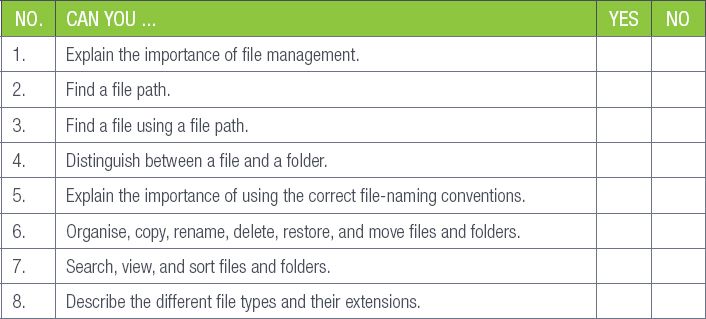30 Free Reasons For Deciding On Workspace Management and Moving Solutions
Wiki Article
10 Tips About Office Relocation Based On Experience And Expertise In Social Value And Sustainability
It's crucial to think about the impact on the environment as well as community value when relocating a business. This not only reduces the environmental footprint, but helps to achieve corporate social responsibility (CSR) goals. Here are 10 suggestions for leveraging experience and expertise in social value and sustainability to relocate offices:
1. Design an Sustainable Relocation Plan
Create a comprehensive relocation plan with sustainability at the center. Create clear sustainability targets that include reducing carbon emissions in the process, reducing waste, and sourcing environmentally friendly materials. This plan will guide your move.
2. Use local and ethical vendors
Join forces with local suppliers of products and services who are committed to sustainability and share the same values. This helps local businesses as well as reducing emissions caused by transportation. Also, it encourages fair-trade practices.
3. Implement a Zero Waste Strategy
Reusing, recycling and repurposing items as much you can in order reduce the amount of waste you generate. It could be as simple as refurbishing old furniture or giving unwanted objects to local charities. Check that the packaging materials you use can be reused and recycled.
4. Conduct a Premove Environmental Impact Assessment
Calculate the environmental impact including carbon footprint, the energy consumed and the production of waste. These information can be used to optimize the moving processes to reduce their environmental impact.
5. Promote Employee Engagement and Awareness
Encourage your employees to join in the sustainability efforts of your employees. These could include recycling, waste reduction or energy saving measures. Informing employees about sustainable practices helps build an environment of accountability and dedication to social value.
6. Optimize logistics and transportation
Improve your routes and make use of cars that are fuel efficient to reduce emissions. You may want to consider electric cars or partnering up with businesses that are certified as green. Combining shipping is a great way to reduce trips.
7. The Plan for Energy Efficiency in the New Office
Ensure the new office location has energy efficiency. This could include the utilization of LED lighting, energy efficient HVAC systems and smart building technology. You can reduce artificial lighting by designing an office that makes the most of natural lighting.
8. Verify that you are in compliance with Green Building Standards
Be sure to get your new office space by using green building standards, such as LEED or BREEAM. This is a great method of demonstrating that you are committed to sustainability for the long term.
9. Create a Social Value Strategy
Create a CSR policy that is in line with the company's overall goals. This could involve supporting local businesses through the donation of furniture and other equipment.
10. Monitor, Measure, and Report on Sustainability Outcomes
Keep track of key sustainability metrics throughout the relocation process like carbon footprint, waste diversion rates, and the social impact. Transparent reporting to the stakeholders will highlight successes and lessons. Use these lessons to continually improve future relocations.
Conclusion
Through incorporating social value skills in office relocations, businesses can help improve the environmental. This not aligns with CSR but also improves the brand reputation and employee satisfaction, resulting in a sustainable and ethical company. Follow the top relocate for blog examples including removal services, office removals, relocations company, best international removalists, house removalists, international moving quote, movers nz, crownworldwide, local interstate movers, crown moving services and more.

Ten Tips For Document Management Systems For Security And Compliance
Compliance and security are the most important aspects of any Document Management System (DMS). A properly designed DMS will provide robust security options and guarantee compliance with industry regulations and standards, such as HIPAA or ISO standards to safeguard sensitive data. Here are 10 ways to maximizing compliance and security in the DMS.
1. Implement Role-Based Access Control
Make sure that your DMS is capable of supporting Role-Based Access Control. This will allow you to restrict access to sensitive files in accordance with the roles and responsibilities of users. It reduces the chance of accessing documents that are not authorized and guarantees authorized personnel only can view edit, delete, or modify documents.
2. Encrypt data at rest and during transport
Secure documents during transit and at rest. It prevents unauthorised access to sensitive information, even when the data is intercepted.
3. Be sure to comply with the regulations of your industry.
The DMS should comply with regulations that are specific to the industry such as HIPAA, CCPA or FINRA. Make sure the system has features that comply with regulatory standards, such as data anonymization.
4. Maintain thorough audit trails as well as activity logs
The DMS must keep detailed audit trails, which include every user action including document generation and modification, deletion or access. These logs help monitor usage, detect unauthorised activity and ensure accountability in the event of a data breach.
5. Incorporate Multi-Factor Authentication (MFA)
You can enable Multi-Factor Authentication when accessing the DMS to provide an additional layer of security. MFA integrates a person's experience (like password) with what they possess (like smartphones) or are (like fingerprint) to make access by unauthorized persons more difficult.
6. Regularly Update and Patch the DMS
Regularly make sure to update regularly to update the DMS with the latest patches and improvements. Updates can help reduce the risk of being hacked. This ensures the security of your environment.
7. Use Data Loss Prevention(DLP) measures
Data Loss Prevention is a tool that allows you to monitor and protect sensitive data within DMS. DLP tools are able to detect and help prevent potential data breaches.
8. Policy on Document Retention and Disposal Policy
Create automated guidelines for document retention and destruction within the DMS. This ensures that documents are stored as required for the duration of the period, and safely disposed of when they are no longer required.
9. Secure Remote Access and Mobile Device Management
As remote work becomes more prevalent and more commonplace, it is essential that your DMS integrates with Mobile Device Management. This protects documents accessed on mobile devices from sensitive data by enforcing the security protocols for device encryption as well as secure VPN, and remote wipe.
10. Conduct regular Security audits and checks for compliance
Conduct regular compliance and security checks to identify the weaknesses and vulnerabilities of the DMS. Periodic assessments can help ensure the compliance of regulations that are constantly changing and also help safeguard against the emergence of new and emerging security threats.
We also have a conclusion.
Prioritizing security and compliance, companies can secure sensitive information, ensure data integrity, and avoid financial and legal penalties. A DMS with strong security and compliance features can provide peace of mind. increases trust with customers and other stakeholders and creates a more secure and reliable document management environment. Read the recommended scansionare for blog tips including software for file management, documentmanagement, content management enterprise, ecm management, document archive software, automation and workflow, ecm management, system document management, workflow automation software, dms document management system software and more.

10 Tips To Help You Select The Right Company For International Relocation: Transparency On Costs, Flexibility With Regards To Customer Service, And Support.
Flexibility, transparency in pricing and assistance from the business are essential for a stress-free move. Here are 10 tips to help you assess these elements successfully:
1. Get detailed and itemized quotes
Request an itemized and precise estimate of all costs related to the relocation. This includes packing, transportation fees and customs fees, insurance and any other services. An itemized list helps you avoid surprise costs and helps you know what you're paying for.
2. Unanswered Questions About Hidden Costs
Ask about additional costs or Hidden fees that may arise in the course of the relocation. Also, inquire about any hidden charges or fees for example, the expedited service, storage charges or unexpected expenses. Planning your budget with precision and avoiding unexpected expenses is much easier if you are aware of the potential expenses.
3. Compare Quotes from Multiple Companies
You can compare costs and services by asking for quotes from different international relocation firms. This allows you to evaluate the price competitiveness and find out which one provides the best value for the money you spend.
4. You should look for a flexible the service plans
You should look for companies with flexible plans for service that can be tailored based on your needs. If you require all-inclusive packing or just transportation A flexible service provider can tailor their services to fit your needs and budget.
5. Changes in the Policy and Cancellations
The company should have a policy on cancellations and modifications to relocation plans. Flexible companies will offer reasonable alternatives in the event that you have to change dates, plans or other services. Also, they should be upfront about their fees.
6. Test the Quality of Customer Support
Examine the level of customer service by contacting the company with inquiries or issues. Be on the lookout for responsiveness, professionalism and courtesy. A good customer service is essential to resolve issues quickly and ensuring a smooth relocation process.
7. You must ensure that 24/7 Support is available.
Pick a company offering 24/7 customer support. This is important, especially when moving across the world and dealing with various time zones. You can receive assistance anytime regardless of the time difference.
Check your support channels and communication methods
Find the different channels of support available. For example live chat, email, phone or even face-to-face consultations. Multiple communication channels provide flexibility and make it simple to reach out to the company for any updates or issues.
9. Transparency and timeliness in the delivery of services is crucial.
Make sure that the business has a clear timeframe and is transparent about the entire process of moving. Updates on the progress of your move and estimated delivery times can help you in reducing expectations and minimizing the risk of uncertainty.
10. Review and read the testimonials of our customers
You may also check out testimonials from past customers to find out how the company is perceived by customers in terms of transparency as well as flexibility and customer service. Actual experiences of previous customers can provide valuable insights into the way in which the company manages these aspects.
The final sentence of the article is:
Focusing on transparency in cost and flexibility, as well as customer support will help you choose an international moving company that has transparent pricing and a range of services. They will also offer great support during the relocation process. These factors will help you to have a seamless and efficient move, minimize anxiety and prevent unexpected problems. Have a look at the best fit out uk for website tips including herman miller furniture, herman miller aeron 2nd hand, best office furniture near me, used aeron chair, shop office furniture, herman mille r, used office furniture shop, aeron chair second hand, 2nd hand office furniture for sale, hammer miller and more.
